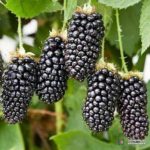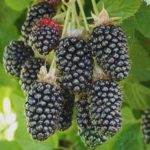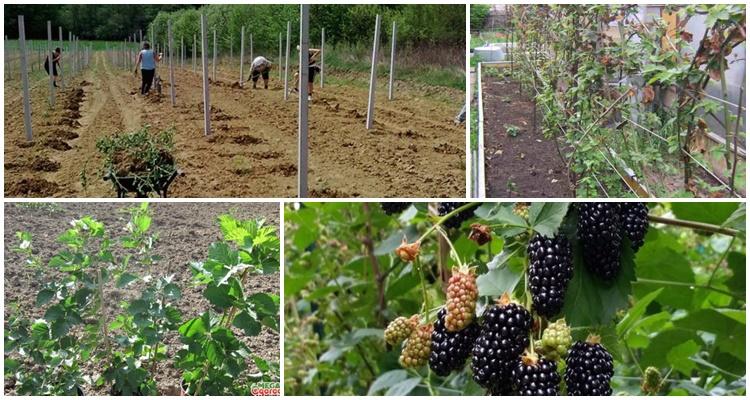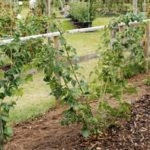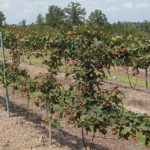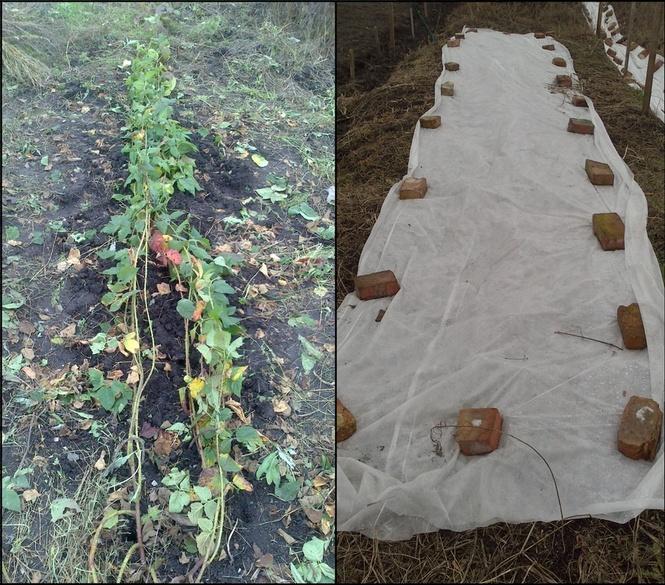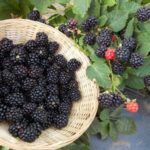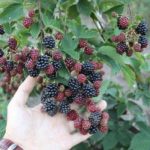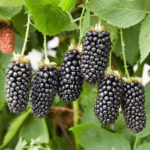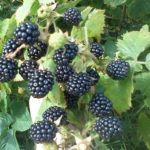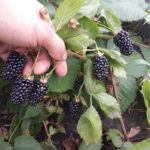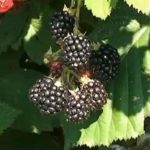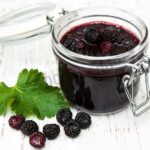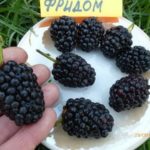Today, new varieties of blackberries with interesting properties are appearing. Let's consider the description and main characteristics of Black Butte blackberries, its pros and cons. Features of cultivation, planting dates, care technologies. Protection from common diseases and pests. How to propagate the crop in households, when to harvest the berries and how to store them.
- Botanical description and characteristics of the culture
- Pros and cons of Black Butte blackberries
- Features of growing a plant
- Deadlines
- Selecting a location
- Selection and preparation of planting material
- Planting scheme
- How to care for culture
- Wintering
- Diseases and pests of the variety
- Reproduction methods
- Cleaning and storage
Botanical description and characteristics of the culture
Black Butte has a small, moderately spreading bush, consisting of 4-6 stems. The height of the shoots is 3-4 m, they are flexible, creeping, covered with black thorns. There are no root shoots. The peculiarity of the hybrid and its main advantage is its large-fruited nature; the plant produces fruits weighing 10 g (if intensive cultivation is used - 20 cm), 5 cm long.
Ripe blackberries are black, with shiny skin. The fruits are cone-shaped, the taste is sweet, with barely noticeable sourness. Productivity – 3.5 kg per bush.
Pros and cons of Black Butte blackberries
Features of growing a plant
The shoots of the Black Butte variety are not erect; they need to be tied up for stability. The traditional way of growing is on supports.
Deadlines
Blackberry seedlings are planted in the spring, when the leaves have not yet blossomed, or in the fall, when they have already fallen, but a month before the onset of persistent cold weather. If the seedlings are grown in pots, they can be replanted even in summer, provided they are provided with regular watering.
Selecting a location
Blackberries grow in open, sunlit areas or in light partial shade. In the shade, it reduces yield. The area with the crop is located near buildings or fences to protect it from the winds.
Selection and preparation of planting material
Blackberry seedlings suitable for planting must have healthy, fresh and strong roots.The bark of the shoots is smooth, elastic, green. Preparing blackberries is simple: a day before planting, the roots are cut with pruning shears and soaked in a solution of a root growth stimulator. This will allow the plant to take root faster.
Planting scheme
The distance between neighboring blackberry seedlings should not be less than 0.8 m in a row. Row spacing is made at least 2 m wide. With this placement scheme, the bushes will receive sufficient nutrition area.
For each blackberry seedling, prepare a planting hole with a diameter of at least 0.7 m and the same depth. A drainage layer is placed in each and covered with a mixture of earth, humus and ash. Lower the blackberry roots, straighten them, and fill the free space with soil up to the root collar. They compact it, water the planted plants and cover it with a layer of mulch made from straw, old hay, and sawdust.
How to care for culture
Black Butte blackberries require watering, fertilizer, annual pruning and winter cover. The culture loves moderately moist soil, not dry, but not wet either. It grows poorly in dry conditions, the leaves of the plants wither, the fruits remain small and not juicy.
When wet, the roots suffer from rot. When the berries begin to fill, be sure to water the plants so that moisture gets into the fruits.
Fertilize the bushes 3 times a season: early in the spring, after flowering, and during the period of ovary growth. Organic and mineral fertilizers are used. Organic matter is fertilized with humus or compost, ash, saltpeter, urea, superphosphate and various potassium fertilizers are used.
Wintering
In the fall, Black Butte bushes are pruned and fruit-bearing stems, dry and with traces of damage or disease, are removed. The bushes, cleared of excess, are covered with agrofibre, and the tree trunk area is covered with a layer of mulching material.If there is no agrofibre, you can cover the plants with spruce branches and dry leaves. Mulch should completely cover the ground and shoots. In the spring, when the snow melts, the covering layer must be removed.
Diseases and pests of the variety
Like other crops, blackberries can be affected by fungal diseases. In order not to wait for their appearance, the bushes are sprayed with agrochemicals as a preventive measure. This will reduce the likelihood of infection spreading and plant contamination. The same goes for pests. Once they multiply, you will need to spend more money and time to get rid of them. Preventative treatment will make further care of the bushes easier.
Reproduction methods
Bushes are propagated by rooted shoots. At the beginning of summer, they are bent to the ground, covered with earth and watered all summer so that the root system has time to form. They are separated from the mother bush in the fall or next spring and transplanted to a new area. In the future, the cuttings are cared for as adult plants.
Cleaning and storage
Black Butte fruits can ripen at the end of June in the southern regions, if the plant grows further north - at the beginning of July. The variety bears fruit for a long time - you can stretch out the berry picking for almost 7 weeks due to the fact that blackberries do not bloom at the same time.
Ripened blackberries are black and shiny. They are incredibly tasty when eaten fresh. Specimens suitable for storage must be firm and not overripe. They are placed in baskets or boxes, lined with a layer of paper no more than 5 cm. Placed in the cellar, in a cold, dry and dark place.
Black Butte blackberry is a new variety with large berries. It can be grown in ordinary home gardens; the propagation technology and care package are not complicated.The variety is unpretentious, but requires cultivation on trellises, which, however, will not surprise an experienced gardener.

